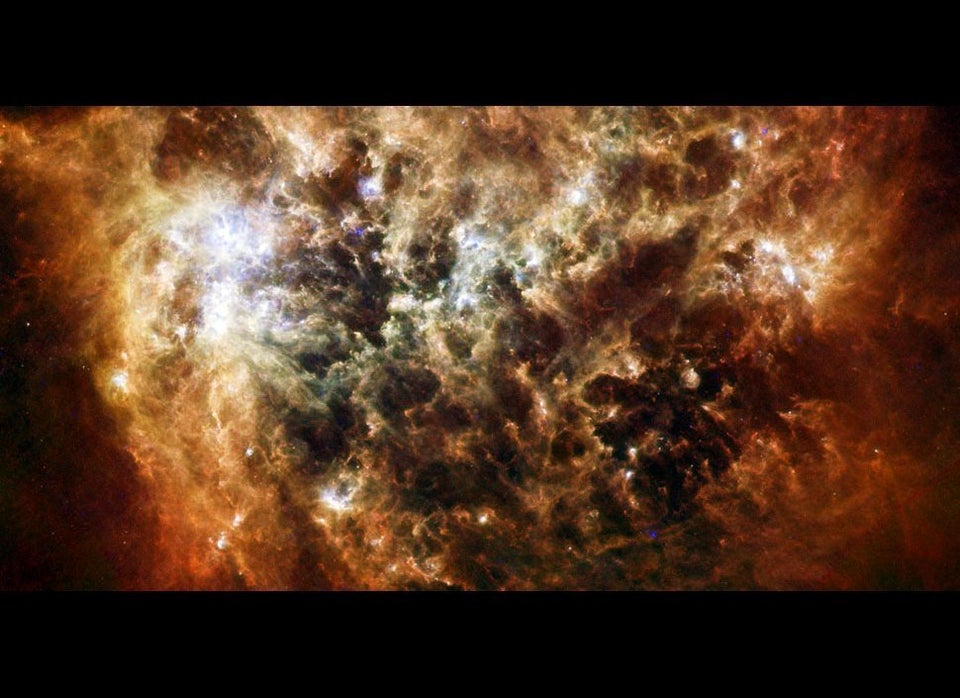
By: Geoff Gaherty
Published: 07/18/2012 06:22 PM EDT on SPACE.com
As the moon makes its monthly rounds in its orbit around the Earth, it frequently has encounters with bright stars and planets, with Saturn and Mars taking center stage in the nights ahead.
In many ways, we can think of these gatherings in the night sky as scenes in an ongoing drama. Usually they are one-on-one encounters, but last week and this week obsevers are witnessing some dazzling planetary group scenes, weather permitting.
On Sunday (July 15), the waning crescent moon joined the planets Venus and Jupiter and the star Aldebaran at dawn.The New Moon, when the moon passes the sun in the sky and is not illuminated as seen from Earth, occurs on Thursday (July 19) as the moon moves into the evening sky.
Just after sunset next Tuesday (July 24), the moon has another encounter with two planets and a bright star: Saturn, Mars and Spica. [Amazing Photos: Jupiter, Venus & Moon in July]
Mars and Saturn reign
Because of the angle from which the sunlight strikes the moon, the moon will be a waxing crescent rather than a waning crescent, growing rather than shrinking, and the rest of the characters in the cast will be totally different. The planets Venus and Jupiter will be replaced by Mars and Saturn, and the star will be Spica instead of Aldebaran.
While the moon has just entered the scene from the right, moving towards first quarter, the planets and star will be making their "farewell appearances" for the season as they head towards the right into the "wings" behind the sun.[Gallery: Planet-Watching Guide - July 2012 Sky Maps]
Because Saturn is a very large slow-moving planet and is always quite far from the Earth, it doesn't change its appearance much from our point of view. At opposition on April 15, it was 19 arc seconds in diameter and magnitude +0.2 in brightness. Now it is 17 arc seconds in diameter and +0.8 magnitude in brightness.
Astronomers measure the apparent size of objects in the sky in angular measures: 90 degrees from horizon to overhead, 60 arc minutes in a degree, and 60 arc seconds in an arc minute. The Big Dipper is 25 degrees across and the moon is 0.5 degrees, or 30 arc minutes, or 1800 arc seconds.
The largest any planet appears, as seen from Earth, is Venus at its closest, a mere 1 arc minute or 60 arc seconds. That's why planets look so small, even in the largest telescopes.
The brightness of objects in space is measured on a magnitude scale, where the brightest stars are magnitude 1 and the faintest visible to the naked eye are magnitude 6. Objects brighter than the brightest stars, such as the sun, moon and brightest planets are listed as negative numbers on this upside down scale.
Red Planet sky show
Mars, in contrast to Saturn, is quite small and moves rather quickly around the sun. As a result Mars changes its size and brightness quite markedly over the course of its apparition.
When Mars was in opposition on March 3 it was relatively large, 14 arc seconds in diameter, and bright, magnitude –1.2. It has now shrunk to 6 arc seconds and is only magnitude +1.0.
The bright star Spica is 263 light-years distant, at magnitude +1.0 the brightest star in the constellation Virgo. It represents a sheaf of wheat in the Virgin’s hand, and its appearance in spring is a signal to farmers to plant their wheat.
Although these four objects (Mars, Saturn Souca and the moon) appear close together in the sky from our vantage point on Earth, in reality they are at vastly different distances, so different that it is hard to find a common distance scale. This is why astronomers sometimes use time as a yardstick, using the speed of light —186,282 miles per second (299,792 kilometers per second) —to get a meaningful comparison for us regular humans.
The moon is the closest, its light taking only 1.24 seconds to reach us. Mars is next, but its distance must be measured in light minutes, 13.2 light-minutes to be precise. Saturn is far enough away that its light takes 1 hour and 22 minutes to reach Earth.
When we come to Spica we must use a much longer yardstick: Spica's light takes 263 years to reach us. The light we see from Spica left the star 263 years ago, in the year 1749.
So, when you gaze at these four objects grouped grouped closely together in the evening sky on Tuesday night, be aware of just how far apart they really are.
Editor's note: If you snap an amazing photo of Saturn, Mars, the moon or other sky sight and would like to share it with SPACE.com, send images and comments to SPACE.com managing editor Tariq Malik at tmalik@space.com.
This article was provided to SPACE.com by Starry Night Education, the leader in space science curriculum solutions. Follow Starry Night on Twitter @StarryNightEdu.
